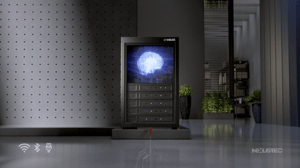Seamless special effects for realistic, high-quality visuals
Our VFX services make the impossible real.
Vizburg offers you first-class visual effects that take your projects to the next level. From realistic 3D visualizations to breathtaking CGI scenes, our team makes the impossible possible.
We take your raw footage and seamlessly add special effects that look so visually natural that they are barely recognizable as effects.






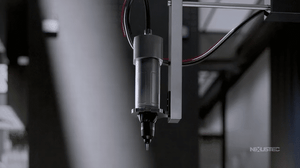
VFX areas of application
- 01 VFX in advertising
- 02 VFX in film and
TV production - 03 VFX in video games
- 04 VFX in architecture
- 05 VFX in medicine and science
In the advertising industry, VFX is used to showcase products in a creative and innovative way. By digitally augmenting scenes and creating impressive effects, VFX can increase the audience's attention and enhance the brand experience.
- Product staging in fantastical environments: Products can be placed in dynamic, often surreal environments that would not be possible in the real world.
- Creating engaging animations: Brands use VFX to create animated commercials or sequences that emotionally reinforce the core message.
- Visualizing complex concepts: VFX makes it possible to visually represent abstract or complicated product features, such as technology or medical products.
- Reinforcing emotions: Visual effects can be used to strengthen emotional reactions and convey the message more intensively.
- Simplified adaptation for different platforms: Digital content can be adapted more easily to different formats, from TV to social media and websites.
In the film and TV industry, visual effects are an indispensable tool for presenting stories in a spectacular and credible way. VFX allows filmmakers to create scenarios that would not be physically possible, bringing characters and worlds to the screen that captivate the audience.
- Creating fantastical worlds: CGI can be used to digitally create entire environments, from distant galaxies to historical settings.
- Integration of animated characters: Realistic digital creatures or characters are integrated into live action scenes in such a way that they interact seamlessly with real actors.
- Visual enhancement of stunts and action sequences: Dangerous or impossible stunts can be made safe and impressive with VFX.
- Post-production and enhancement of scenes: VFX ensures that scenes are digitally enhanced, adjusted or corrected after filming, for example by correcting colors or removing unwanted objects.
- Weather and environmental effects: Rain , snow, storms or natural disasters can be realized realistically and cost-effectively thanks to VFX.
The video game industry relies heavily on VFX to create realistic or fantastic game worlds and to intensify the gaming experience with seamless transitions and impressive effects. VFX is the key to immersive gaming experiences that are visually compelling and fun to play.
- Realistic environments and landscapes: VFX creates detailed and interactive environments that enhance immersion in the game world.
- Dynamic weather and lighting effects: The integration of dynamic effects such as rain, wind or sunlight increases immersion and realism.
- Impressive cutscenes: Seamlessly integrated CGI scenes between gameplay segments help to tell a gripping story.
- Creation of fantasy characters and creatures: Creatures and figures that do not physically exist come to life through VFX and add new dimensions to the game world.
- Effects for fights and interactions: VFX improves the visual representation of fights, magic or explosions, making the gameplay more captivating.
In architectural visualization, VFX helps architects to present design drafts vividly and photorealistically even before the construction projects are realized. This gives clients and investors a clear idea of the end result.
- Create realistic 3D renderings: With VFX, building projects can be photorealistically represented, including materials, lighting and shadows.
- Virtual tours: Customers can use VFX to virtually walk through 3D visualizations before a building is completed.
- Environmental representation: Buildings can be inserted into realistic environments that accurately reflect the location and surroundings.
- Presentation of different design variants: Different materials and designs can be visualized quickly and efficiently to present alternative solutions to the customer.
- Integration of natural elements: Nature such as water, plants and lighting conditions can be realistically integrated into the design using VFX.
VFX is also playing an increasingly important role in medicine and science. Complex biological processes, molecular structures or surgical procedures can be presented in an understandable and visually appealing way using VFX.
- Simulation of biological processes: cell structures , blood flows or organ functions can be visualized in detail in animations using VFX.
- Explanation of medical treatments: Animated explanations can be used to present medical treatments and operations in an understandable way in order to better inform patients.
- Creating scientific animations: VFX helps to make scientific theories and concepts that are difficult to explain visually tangible.
- Visualization of micro-worlds: Processes that are not visible to the naked eye, such as molecular interactions, become understandable to the viewer through VFX.
- Presentations for medical training: Animated medical procedures or treatments are used in training programs to impart the necessary knowledge to specialists.
FAQ for visual effects from VIZBURG
Visual effects, or VFX for short, are a powerful tool that makes it possible to create impressive and realistic images that would be difficult or impossible to realize in the real world. VFX is used in many industries - from film and TV productions to advertising and architectural visualization. To give potential customers and interested parties a better insight into the possibilities and processes of VFX, you will find a FAQ with the most frequently asked questions about VFX here.
VFX can be used in a variety of projects, especially in areas where visuals play an important role. These include:
- Film and television: to create action scenes, fantastic worlds or digital creatures.
- Advertising: To present products in innovative, visual environments.
- Video games: To create immersive and dynamic worlds and characters.
- Architectural visualization: Photorealistic 3D models of buildings and rooms.
- Medical visualization: To depict complex biological processes or surgical techniques.
The duration of a VFX production depends on the complexity of the project. Small VFX projects, such as simple animations or effects, can be completed in a few days. However, more elaborate projects such as large 3D scenes, complex simulations or complete CGI characters can take weeks to months. Factors such as the number of effects, the required level of detail and the desired final format play an important role here.
VFX studios rely on a variety of specialized software to achieve the best results. The most commonly used tools include:
- Autodesk Maya: Widely used for 3D modeling, animation and rigging.
- Houdini: Renowned for its ability to simulate realistic effects such as fire, water and explosions.
- Nuke: Leader in compositing to seamlessly combine CGI and live action footage.
- Cinema 4D: Particularly popular in the advertising and motion design industry.
- Blender: Open source software used for 3D modeling as well as animation and rendering.
In post-production, VFX plays a central role in the editing and enhancement of scenes. Here are some of the most common post-production tasks:
- Compositing: various visual elements, such as live action footage and CGI, are brought together to create a seamless scene.
- Rotoscoping: Manual or automatic cutting of objects or people to integrate them into other scenes.
- Tracking: The tracking of movements in a scene so that CGI elements move naturally with the camera.
- Rendering: The final step in which all edited elements are combined into a high-quality image or video.
- Color grading: Adjusting colors and lighting to enhance the atmosphere and visual style of scenes.
The costs for VFX services vary greatly depending on the scope and complexity of the project. Smaller projects with simple effects are usually less expensive, while extensive film projects or complex animations require significantly higher budgets. Factors that influence the costs are
- Number and type of effects: more effects and more complex simulations increase costs.
- Depth of detail: The more realistic and detailed an effect needs to be, the more expensive the production will be.
- Time required: Projects with tight deadlines or very specific requirements often require additional resources and increase costs.
- Software and technology: The use of state-of-the-art technology or specialized software can also influence costs.
It is important to have a clear idea of the desired effects and budget in advance in order to receive a customized quote.
VFX offers many advantages over traditional, practical effects, including
- Creative freedom: VFX allows you to create scenarios that would be physically impossible in the real world, such as fantastical worlds or futuristic cities.
- Cost-effectiveness: It is often cheaper to create a digital environment than to build a real backdrop or film it at great expense.
- Safety: Dangerous stunts or explosions can be safely created digitally using VFX without endangering actors or crew.
- Flexibility: VFX enables subsequent adjustments and corrections without having to reshoot scenes.
- Realism: Modern VFX technologies make it possible to create extremely realistic effects that are practically indistinguishable from real footage.
Yes, client feedback is an essential part of any VFX production. Most VFX studios work closely with their clients and offer regular interim meetings where the progress of the effects is presented. This allows clients to make adjustments and suggestions before final rendering takes place. This collaboration ensures that the end result meets expectations and fulfills all creative requirements.
CGI (Computer-Generated Imagery) is a subset of VFX and refers specifically to images created entirely on a computer, such as 3D models or digital characters. VFX, on the other hand, covers a broader spectrum, including CGI, but also compositing, digital manipulation of film material and other techniques for integrating visual effects into film scenes.
VFX plays a decisive role in architectural visualization, as it enables planned construction projects to be depicted photorealistically even before they are implemented. Some use cases in architecture are
- 3D renderings of buildings and interiors: these help to depict designs more realistically and visualize material choices or lighting design.
- Virtual tours: Potential buyers or investors can walk through buildings that do not yet exist to get a realistic impression.
- Integration into real environments: Building plans can be inserted into real urban landscapes to simulate the urban effect.
- Material and design variations: Architects can quickly visualize different materials and design elements to show alternatives.
- Construction phase simulation: Visualize the construction process at different stages to show progress to investors and clients.
In der Werbebranche wird VFX eingesetzt, um Produkte und Dienstleistungen auf innovative und ansprechende Weise zu präsentieren. Die Vorteile umfassen:
- Kreativität und Einzigartigkeit: VFX ermöglicht es, Werbeanzeigen zu erstellen, die das Publikum durch ungewöhnliche und auffällige Effekte anziehen.
- Produktvisualisierung: Produkte können in dynamischen oder surrealen Umgebungen platziert werden, um ihre Vorteile oder Nutzungsmöglichkeiten zu verdeutlichen.
- Verbesserte Markenwahrnehmung: Hochwertige visuelle Effekte hinterlassen einen bleibenden Eindruck und stärken das Markenimage.
- Flexibilität: Werbung kann leicht an verschiedene Plattformen angepasst werden, von TV bis hin zu Social Media.
- Schnelle Umsetzung: Dank digitaler Technologie können Effekte in kürzerer Zeit und zu geringeren Kosten produziert werden als mit praktischen Mitteln.








This is what our project initiation process looks like
1. getting to know each other
The first step is to get to know you and your company better. In a non-binding discussion, we find out more about your ideas, your goals and what kind of animation you have in mind. This gives us a feel for your needs and helps us to create an initial basis.2nd Deep Dive Call: Project requirements and analysis
After we get to know each other, we go into depth. In a deep dive call, we clarify the exact project requirements, the theme analysis and the intended use of your animation. Together, we work out the most important content and define what kind of style and scenes best suit your goal. This intensive exchange forms the basis for our tailor-made offer and ensures that we understand your requirements precisely.3. create an individual offer
Based on the results of the deep dive call, we create a tailor-made offer for you. This includes all the important points of the project, the scope of the work and the costs. This gives you a clear idea of how the project will proceed.4. offer discussion
In a subsequent meeting, we will explain the offer to you in detail. We will go through all the points step by step, answer your questions and clarify open details so that you understand exactly what is included in the project and how we will proceed.5. placing of order
If you are satisfied with the offer and ready to start the project, you place the order with us. Together we will determine the next steps and set the schedule.6th handover and kickoff with our Senior Creative Director
Now it's getting exciting! In a kick-off meeting with our Senior Creative Director, we discuss the creative approach for your animation in detail. Together, we determine the final plan and define the starting point. This officially launches the project and we get to work realizing your vision.
Contact us
We will be happy to advise you and are always available to answer your questions.You can call or write to us.
